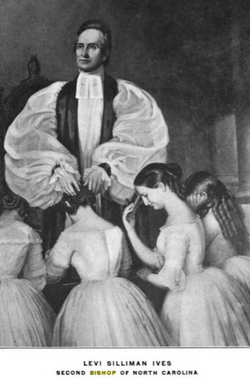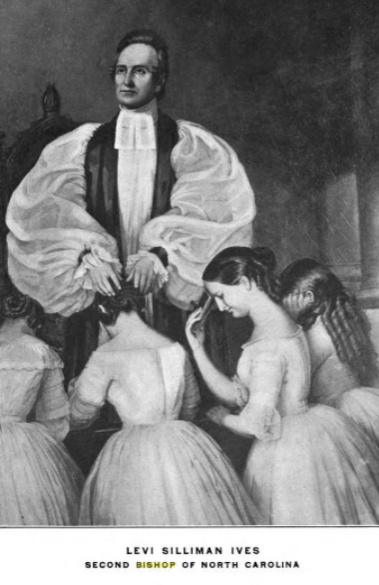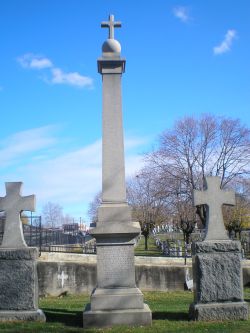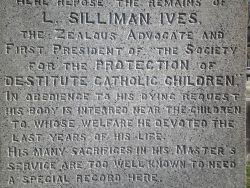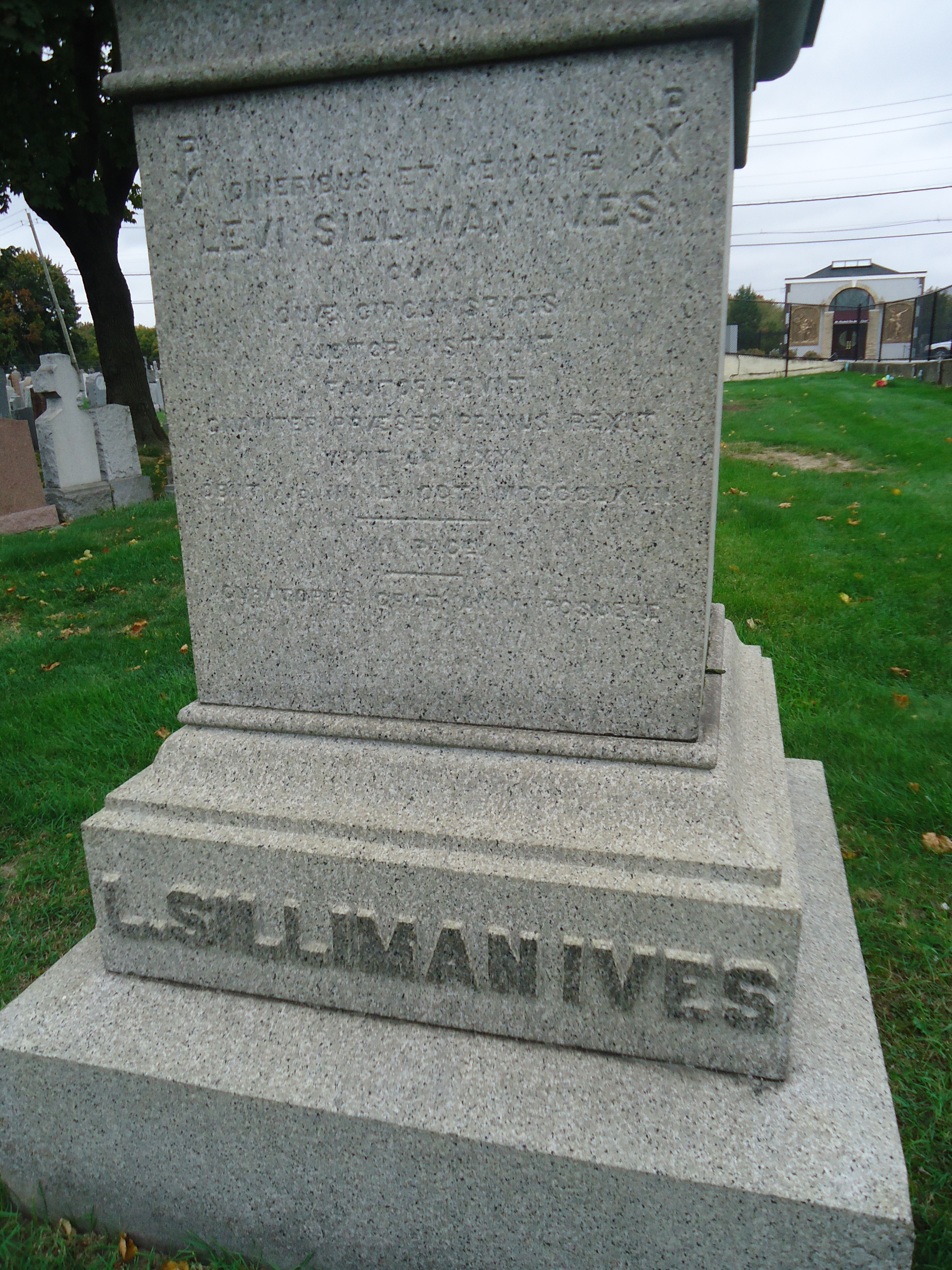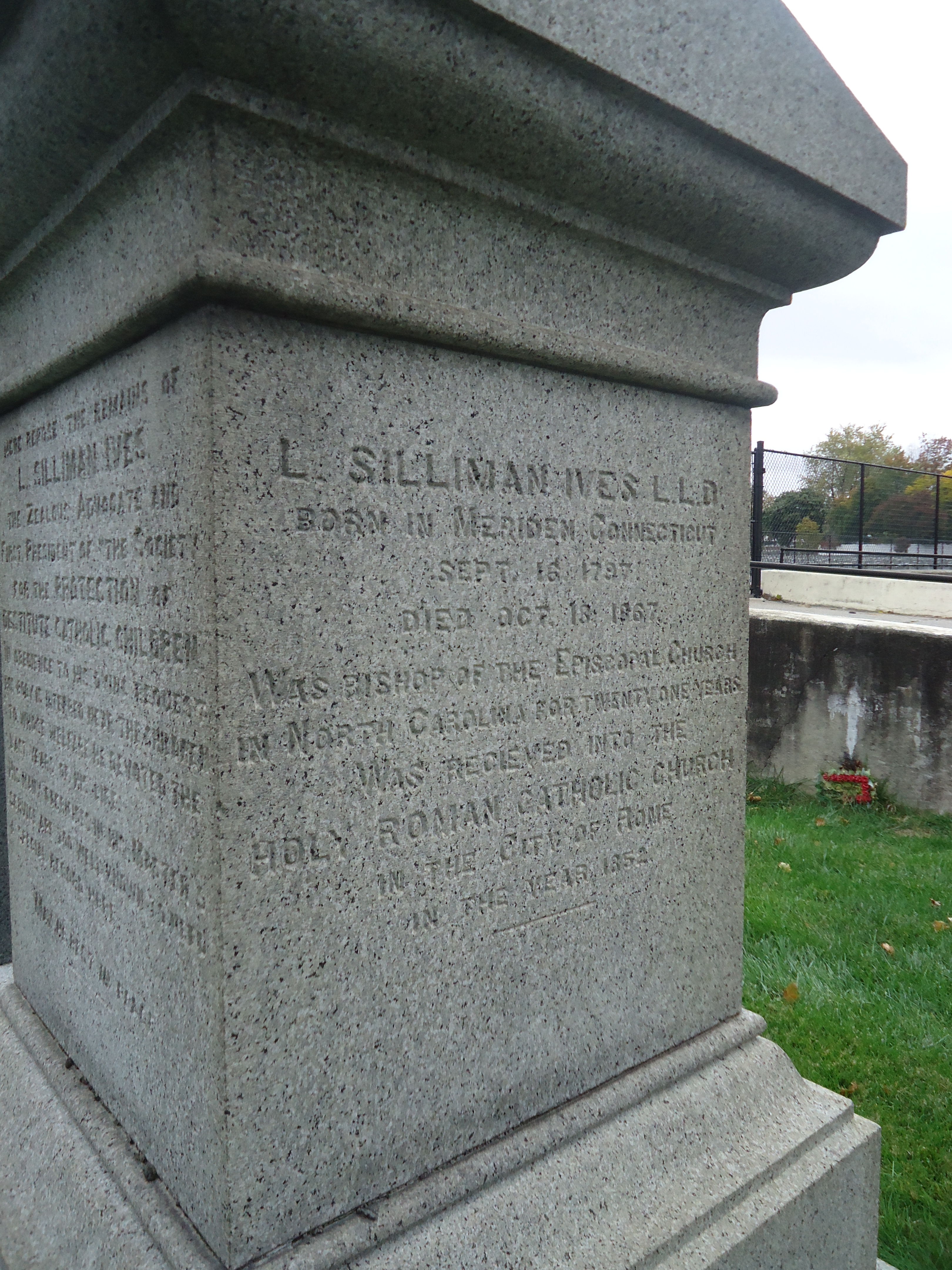NEXT TO ST RAYMONDS ROMAN CATHOLIC CHURCH ON EAST TREMONT AVE.
WHEN METROPOLITION LIFE INSURANCE COMPANY, BOUGHT TTHE PROPERTY FOR THEIR HOUSING DEVELOPEMENT.
WIFE NAME WAS REBBECA
ON THIS MONUMENT, ALL ROUND IT, I WAS TOLD THIS A.M @ ST RAYMOUND'S. OLD SECTION WAS HIS WIFE AND THEIR FAMILY MEMBERS,( I COULD MAKE OUT ONLY HER NAME AS REBBECCA)
PRIEST AND NUNS WHO WORKED AT THE PROTECTORY.
ARE ALSO HERE.....THE STONE IS VERY WORN TO READ.
HOPEFULLY WITH RESEARCH, WE CAN FIND OUT THE NAMES HERE.
THE BIO HERE : IS FROM THE ADVENT ON THE NET.
Born at Meriden, Connecticut, U.S.A. 16 September, 1797; d. at New York, 13 October, 1867. He was one of the most distinguished converts to the Church made in the United States through the influence of the Tractarian Movement of 1848-49. The war of 1812 with England broke out while he was at school, and he joined the army, serving for a year. His further education he received at Hamilton College. In 1823 he was ordained a minister of the Protestant Episcopal Church, and officiated at several charges in New York and Pennsylvania until 1831, when he was elected Bishop of North Carolina. Here he took great interest in the education and religious training of the coloured people of that section. Deeply interested by the Oxford Movement, he founded at Valle Crucis in North Carolina a religious community, called the "Brotherhood of the Holy Cross". The members, a few clergymen and zealous laymen, observed a community rule and went about preaching Tractarian ideas. So warm was the advocacy of the Oxford theories by Bishop Ives that he was arraigned for them before the convention of the Episcopal Church. His explanations were accepted for a time, but the "Brotherhood of the Holy Cross" was dissolved. In 1852 he went to Rome and made his submission to the pope, and thus, as he said himself, "abandoned a position in which he had acted as a minister of the Protestant Episcopal Church for more than thirty years, and as a bishop of the same for more than twenty, and sought late in life admission as a layman into the Holy Catholic Church, with no prospect before him, but simply peace of conscience and the salvation of his soul." His wife, who was a daughter of the Protestant Bishop Hobart, also became a convert. Returning to the United States he acted as professor of rhetoric at St. Joseph's Seminary, New York, and lectured to the pupils of several convents, concerning himself also in charity work. In the latter field he established the Catholic Protectory in New York, and was the first president of that institution.
NEXT TO ST RAYMONDS ROMAN CATHOLIC CHURCH ON EAST TREMONT AVE.
WHEN METROPOLITION LIFE INSURANCE COMPANY, BOUGHT TTHE PROPERTY FOR THEIR HOUSING DEVELOPEMENT.
WIFE NAME WAS REBBECA
ON THIS MONUMENT, ALL ROUND IT, I WAS TOLD THIS A.M @ ST RAYMOUND'S. OLD SECTION WAS HIS WIFE AND THEIR FAMILY MEMBERS,( I COULD MAKE OUT ONLY HER NAME AS REBBECCA)
PRIEST AND NUNS WHO WORKED AT THE PROTECTORY.
ARE ALSO HERE.....THE STONE IS VERY WORN TO READ.
HOPEFULLY WITH RESEARCH, WE CAN FIND OUT THE NAMES HERE.
THE BIO HERE : IS FROM THE ADVENT ON THE NET.
Born at Meriden, Connecticut, U.S.A. 16 September, 1797; d. at New York, 13 October, 1867. He was one of the most distinguished converts to the Church made in the United States through the influence of the Tractarian Movement of 1848-49. The war of 1812 with England broke out while he was at school, and he joined the army, serving for a year. His further education he received at Hamilton College. In 1823 he was ordained a minister of the Protestant Episcopal Church, and officiated at several charges in New York and Pennsylvania until 1831, when he was elected Bishop of North Carolina. Here he took great interest in the education and religious training of the coloured people of that section. Deeply interested by the Oxford Movement, he founded at Valle Crucis in North Carolina a religious community, called the "Brotherhood of the Holy Cross". The members, a few clergymen and zealous laymen, observed a community rule and went about preaching Tractarian ideas. So warm was the advocacy of the Oxford theories by Bishop Ives that he was arraigned for them before the convention of the Episcopal Church. His explanations were accepted for a time, but the "Brotherhood of the Holy Cross" was dissolved. In 1852 he went to Rome and made his submission to the pope, and thus, as he said himself, "abandoned a position in which he had acted as a minister of the Protestant Episcopal Church for more than thirty years, and as a bishop of the same for more than twenty, and sought late in life admission as a layman into the Holy Catholic Church, with no prospect before him, but simply peace of conscience and the salvation of his soul." His wife, who was a daughter of the Protestant Bishop Hobart, also became a convert. Returning to the United States he acted as professor of rhetoric at St. Joseph's Seminary, New York, and lectured to the pupils of several convents, concerning himself also in charity work. In the latter field he established the Catholic Protectory in New York, and was the first president of that institution.
Family Members
Advertisement
Explore more
Sponsored by Ancestry
Advertisement
